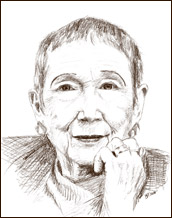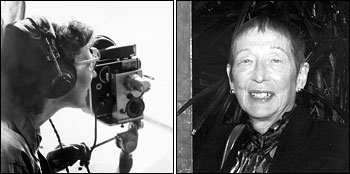


An animated speaker with sharp eyes and a crackling voice, Joanne Simpson strikes one as the type of person who has simply been too busy to worry about growing old. Becoming an octogenarian has not dimmed her enthusiasm so far. Behind her in her office sit over a dozen pictures of her children and grandchildren. To her left, a mosaic of accolades from her 54 years in meteorology tiles the wall. Looking back at Simpson’s achievements, it is easy to see why she does not want to retire. In addition to being the first female meteorologist with a Ph.D., she’s been granted membership to the National Academy of Engineering, awarded the Carl-Gustaf Rossby Award (the highest honor bestowed by the American Meteorological Society), presented with a Guggenheim Fellowship, and served as President of the American Meteorological Society. 
Joanne Simpson’s career spans six decades, from field research aboard an aircraft in the Tropical Pacific (left) to her work with satellite data at NASA Goddard Space Flight Center (right). Not only the first woman to receive a Ph.D. in meteorology, she made many significant discoveries, led research projects, and influenced generations of scientists. [Photographs courtesy Joanne Simpson (left, right) and the Schlesinger Library (left)] Although Simpson’s praises have been sung publicly as an example of a woman who has defied the odds and the male chauvinism of her profession, surprisingly few people outside of meteorology know precisely what she did for the science. Simpson’s scientific endeavors, aside from being exciting, have had a tremendous impact on meteorology over the years. 
One of Joanne Simpson’s greatest discoveries was the hurricane “heat engine.” This process brings energy from the ocean surface to the clouds high above, driving the storm’s awesome power. (Image courtesy Marit Jentoft-Nilsen, NASA GSFC) Early in her career, Simpson developed the first cloud model, discovered what makes hurricanes run, and revealed what drives the atmospheric currents in the tropics. During her 40s and 50s, Simpson conducted some unique “weather modification” experiments that continue to have an impact on meteorology today. For the past 24 years, she has been with NASA, leading efforts in cloud modeling and space-based meteorological experiments. With both her mind and her desire to work as sharp as ever, Simpson will undoubtedly continue to make important contributions to the study of the atmosphere. |
Portrait by Martin Mueller, NRC/NASA GSFC |